How workwear coats became fashionable
PRODUCTS | 05.08.2020
It’s surprising how many fashion items, especially jackets, started out as workwear. They’ve been picked up by youth cultures and made their own, perhaps with their original functions in mind, but mainly because they just look great. Given enough time, those same items can go mainstream, and sometimes even become quite formal.
The workwear/streetwear crossover is in Dickies’ DNA. A couple of generations have grown up knowing Dickies as a fashion brand loved by laid-back folks, but our origins are firmly in the workplace. Back in the 1920s, we started designing hard-wearing clothes for manual workers that were comfortable and smart. It just so-happened that skateboarders of the 1970s wanted just those qualities in their clothing, and they made our name synonymous with that subculture – a link that remains in place to this day.
But you don’t have to be a skater to wear Dickies. It’s worn by everyone, and the name is still regularly seen in the workplace. So here’s our rundown of the workwear classics that have bridged the gap to fashion – and many of them have made it into the Dickies range.
Where do Eisenhower jackets get their name from?
Eisenhower jackets get their name from Dwight D Eisenhower, the World War 2 general who oversaw the Allied invasion of France in 1944. He wore a light, unlined jacket that was halfway between formal and rugged to match his duties, which were both formal and military.
A lot of images of Eisenhower from the period show him wearing the jacket when he was out in the field, commanding and rallying the troops. The jacket, not too ceremonial or pompous, but smart enough to show his rank, became synonymous with a workmanlike, can-do attitude, and it caught on after the war. Eisenhower himself was popular, which no doubt helped with the jacket’s sales – he became US President in 1953 and served until 1961.
The modern Eisenhower jacket is a suitably stripped-back design, with no frills and fitting just around the waist, ust like Dwight wore it. It’s unlined, so serves as an overlayer when you’re out, and is a great choice for city wear and throwing on between skating sessions.
What is a Harrington style jacket?
A Harrington jacket is a light, waist-length casual jacket that was first designed in 1930s England as a golf jacket. US soldiers based in Britain in WW2 took them home, and the style took off in post-war America, where they were popularised by James Dean and Frank Sinatra.
The original, made by Manchester firm Baracuta, was simply called the Baracuta G9 (“G” for golf). But it wasn’t just golfers who wore the jackets. They were often worn by manual workers such as truck drivers, as they were light and flexible. But why “Harrington” and not G9? That goes back to the hit 1960s TV show Peyton Place – a character called Rodney Harrington used to wear one. It stuck.
The “best of” video above shows Dean in his signature red G9 in Rebel Without a Cause, his most iconic movie.
Harrington jackets really haven’t gone away since their inception. From homecoming GIs to movie and rock’n’roll stars, the jacket was adopted by mods and skinheads, as it met their smart casual urban style. In the 1990s during the Britpop era, they got another boost when they were re-popularised by bands like Oasis and Blur. Take a look through our own collection of Harrington jackets for more inspiration. We call them coach jackets, but the design is basically the same, with a Dickies twist.
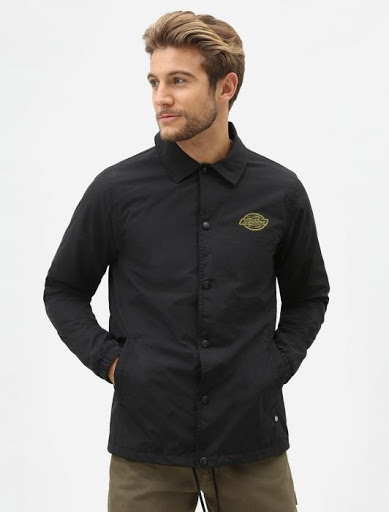

What is a chore coat?
A chore coat is a heavy lined jacket, usually made of thick canvas or moleskin. As the name suggests, they were originally working coats, worn by farmers, builders and labourers in the late 1800s. The coat is now a fashion item, but remains rugged and loose-fitting.
It’s thought these coats were first worn in France during the industrial period that got the likes of Gustave Eiffel dreaming of towers. The chore jacket was large enough to fit over overalls, and had big pockets for keeping tools in (and maybe a baguette or two). The jacket made it over the pond, and by the 1920s, the chore coat was being made in denim – and the classic denim jacket was born.
Eventually, the style would cross the factory floor and started being taken up as an everyday jacket for leisure time. The tailoring was refined, and the choice of colours and styles ballooned so that now, the definition of a chore coat is about as loose as the jacket itself. But you know one when you see one.
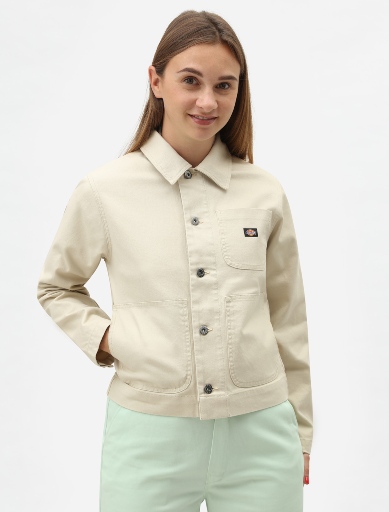

What are wax jackets made of?
The outer layer of a wax jacket is made of cotton fabric impregnated with paraffin or beeswax. The jacket is then lined and usually has an insulating fill. Depending on the style, the collars can be made of the same material or another fabric, such as corduroy.
Wax jackets may now by synonymous with the country set and quite often with moneyed people, but their origins are much more humble. Waxing was already used on sails to stop them getting soaked and heavy when out at sea. But the technique was applied to jackets in the 1890s, and it proved popular among seafarers as it kept them dry.
Once farmers saw the waterproofing and insulating qualities of the jackets, they bought into it completely, and became the most notable customers – hence the modern-day associations with village life, shooting and equestrianism. Then it was a short hop to the so-called “Sloane Rangers” – wealthy city types who never set foot in the country but liked the rural associations. Now, waxed jackets are worn by a wider cross-section, but still have those countrified undertones.
Where do parkas come from?
Parkas were originally made from fur and seal skins by indigenous peoples from the Arctic Circle. The basic concept was adopted for military use in the 1940s, and they were picked up by mods from army surplus stores in the 1960s. They are now a basic type of fashion coat.
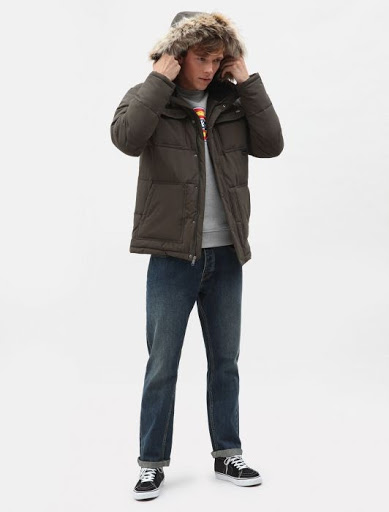

The subculture most associated with parkas is the Mods, who first came into being in the 1960s, with a revival in the 1980s. Mods were associated with sharp dressing and stylish Italian leisure wear, so the choice of ex-military parkas, sourced from army surplus stores, might seem odd. But they were a useful garment for keeping their expensive clothes clean and dry when they were out riding their Lambrettas and Vespas. They could also act as a sort of mat to kneel on when fixing the scooter.
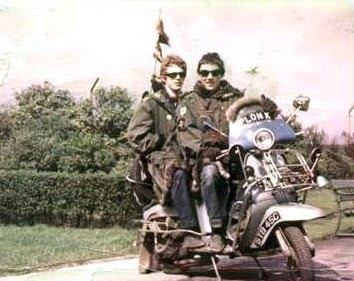

Eventually, the parka took on a life of its own, and fashion houses started to make their own designs, so military surplus stores became, well, surplus to requirements.
What are Borg coats?
Borg is a material that resembles fur, and is made from wool. A borg coat means a coat that has borg either on the outside, sometimes described as “fake fur”, or on the inside as insulation, often extending to the outward-facing sides of the collars.
The material borg is thought to have been pioneered in the 1940s by one George Borg, a mill owner who manufactured material for paint rollers (you see it now, don’t you?). He realised that the fabric could be just perfect for warm coats, and started producing it for New York fashion houses. Needless to say, his idea took off. The material was a cheap alternative to fur, so was worn as a fashion item from then onwards.
Many casual jackets are lined with borg, and it’s a super-cosy way to bring warmth to winter while remaining laid back. The classic style is for the lining to continue right up the collars, so that when they are folded down, the borg is visible. It’s a good look.
What is a teddy bear coat?
A teddy bear coat is a borg coat, made from a woolen fabric knitted with a deep pile. It’s soft and fluffy on the outside, hence its name, and it is usually lined with a cotton or polyester inner to make it more comfortable against the skin.
Teddy bear coats come in all colours and various lengths, although they generally reach below the waist so they look best with jeans and trousers. They are relatively informal, thanks to the random arrangements of threads and the generally soft silhouette, but they’re really snug and warm. Teddy bear coats are another product of Mr Borg’s brainwave, as we described above.
Why is it called a duster coat?
The original duster coats were designed for riding on horseback in the dry, dusty American West of the mid-1800s. They were literally worn to keep the dust off your clothes. By the early twentieth century, they were worn in open-topped cars, but for the same purpose.
The original dusters had a large slit up the back, which would split the coat around the back of the saddle to stop it bunching up, as they were generally knee-length. When they were adopted for early cars, they tended to be worn by women over their best clothes, so there was no need for the slit. By the mid-twentieth century, the fashion had largely died out.
It was actually a glimpse back to the Wild West that re-ignited the style in the 1960s. Characters in Sergio Leone’s spaghetti westerns wore them, and people started demanding the Clint Eastwood look for themselves. Nowadays, the duster coat is a light, loose overcoat worn mainly in summer by women, and bears more of a resemblance to the driving coats than to the original American ones.
What men’s jackets are in fashion?
Contemporary men’s jackets tend to be waist-length and zip-up, but the overall weight is down to personal taste, the weather and how it’s being worn. Harringtons are having a resurgence for everyday wear, but a fur-hooded parka also looks fashionable, especially in winter.
Pullover hooded jackets are proving to be a trending type, especially in the spring and autumn. It’s a look that’s easy to pull off, as they go with almost anything.
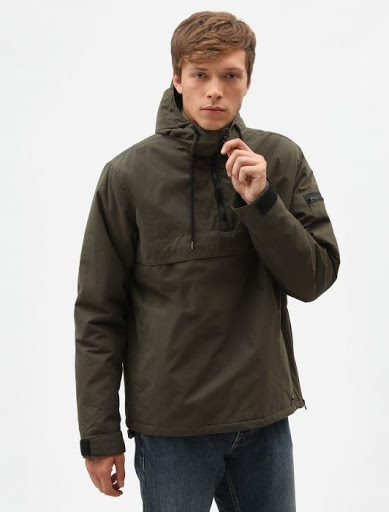

It’s also a good time for the canvas jacket, a modern take on the chore coat, which has undergone plenty of adaptations over the years. Here’s our take, which takes the classic chore outer and mixes in a hood and borg lining.
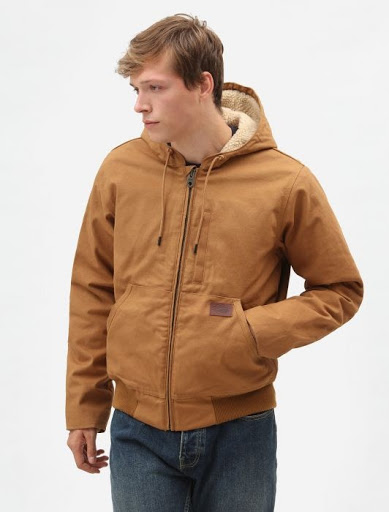



Today’s workwear, tomorrow’s fashion
All this does beg the question: will today’s work jackets become tomorrow’s fashion statements? It’s notoriously hard to predict future fashions, but it does seem like a safe bet that once a jacket has started being widely worn by the world’s workforces, somebody will start wearing it for style purposes and it will spark something big. We’ve seen it happen with chore coats, parkas and wax jackets, so why not lab coats, high-visibility coats, chefs’ whites, medics’ scrubs, or stock market traders’ jackets? Stranger things have happened. Ask the paint roller guy.
